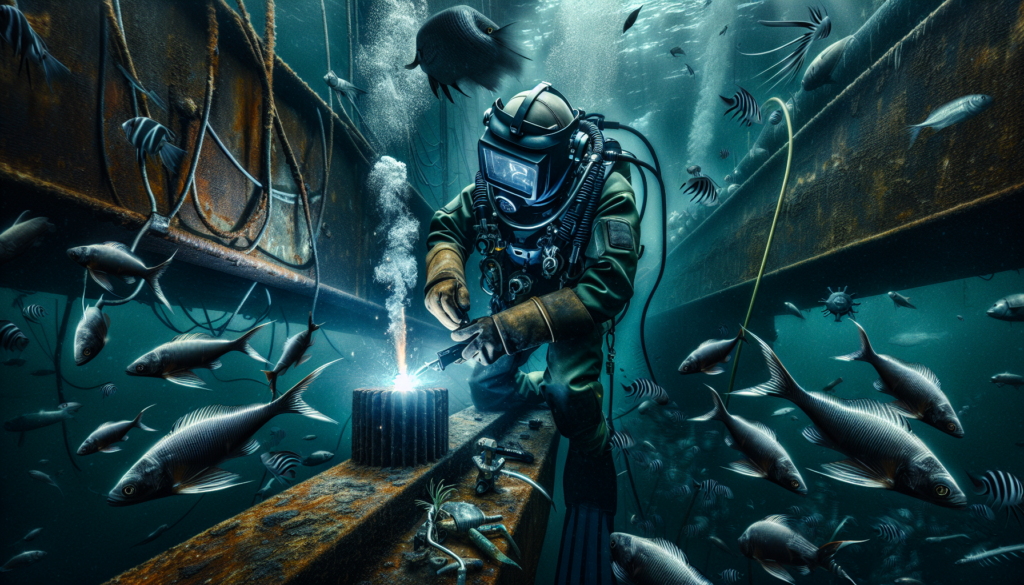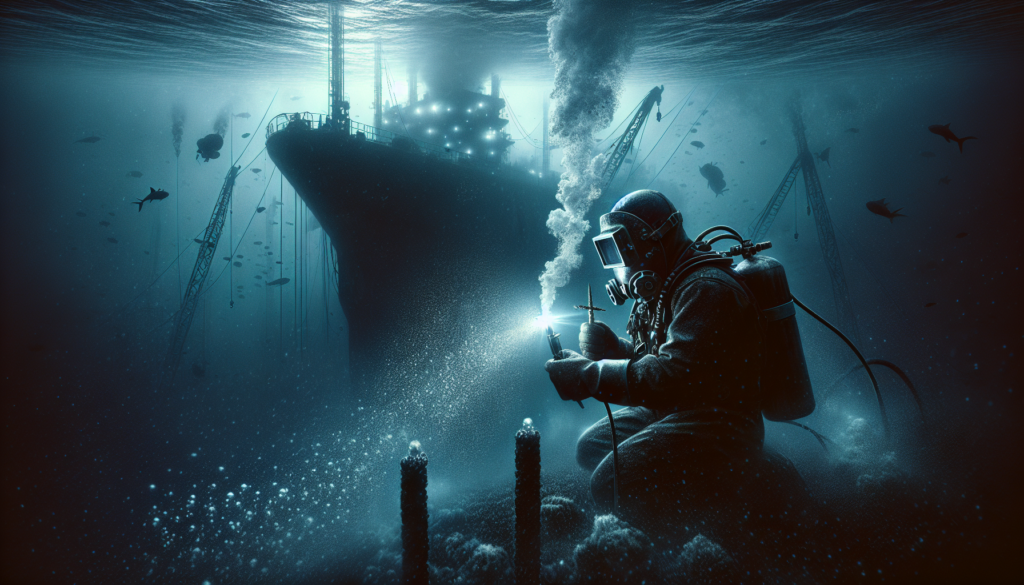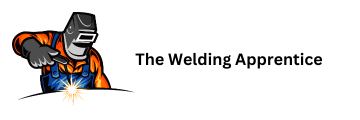Are you curious about the risks involved in the fascinating field of underwater welding? In this article, we will explore the death rate associated with this challenging profession. Underwater welding, a specialized skill that combines welding expertise with diving, is not for the faint-hearted. We will shed light on the dangers that lurk beneath the surface and delve into the statistics surrounding the death rate for underwater welders. Stay with us as we uncover the realities of this high-risk, yet rewarding, career path.

Factors Affecting Death Rate for Underwater Welding
Health and Physical Fitness
One of the key factors affecting the death rate for underwater welding is the health and physical fitness of the divers. Underwater welding is a physically demanding job that requires strength, endurance, and agility. Divers need to be in excellent health to withstand the harsh conditions and physical exertion involved in the job. Medical conditions such as heart problems or respiratory issues can put divers at a higher risk of accidents and fatalities. Therefore, it is crucial for divers to undergo regular medical examinations to ensure their fitness for diving and welding.
Training and Experience
Another significant factor that can affect the death rate for underwater welding is the level of training and experience of the divers. Proper training is essential to ensure that divers have the necessary skills and knowledge to perform their job safely and efficiently. Divers need to be trained in both diving techniques and welding procedures to handle the unique challenges of underwater welding. Additionally, experience plays a crucial role in improving a diver’s ability to anticipate and respond to potential hazards. More experienced divers are generally better equipped to handle emergencies and make quick decisions that can save lives.
Diving and Welding Conditions
The conditions in which underwater welding takes place can greatly impact the death rate associated with the job. Factors such as water temperature, visibility, and currents can present significant challenges for divers. Cold water temperatures can lead to hypothermia, while poor visibility can impede divers’ ability to see potential hazards or escape routes. Strong underwater currents can make it difficult for divers to maintain their position or control their movement. In addition, the nature of the welding work itself, including the presence of flammable materials, can create additional risks. It is essential for divers to be aware of the specific conditions they will be working in and take necessary precautions to mitigate these risks.
Contributing Factors to Accidents and Fatalities
Hyperbaric Conditions
Hyperbaric conditions, which refer to the increased pressure underwater, pose a significant risk to divers involved in underwater welding. The high pressure can lead to a condition called decompression sickness, commonly known as the bends. This occurs when dissolved gases in the blood form bubbles as the diver ascends too quickly to the surface. The bends can cause a range of symptoms, from joint pain and dizziness to paralysis and even death. To prevent this, divers follow strict ascent and decompression protocols, allowing their bodies to adjust gradually to the changing pressure.
Drowning and Suffocation
Drowning and suffocation are two of the most feared risks for underwater welders. In the event of a failure in equipment or a loss of consciousness, divers may become trapped underwater, unable to reach the surface for air. It is crucial for divers to not only have proper safety equipment, such as a reliable air supply and a backup breathing apparatus, but also to maintain constant vigilance and situational awareness. Regular safety drills and emergency response training can help divers develop the skills and presence of mind to effectively respond to these life-threatening situations.
Equipment Failures
Equipment failures can also contribute to accidents and fatalities in underwater welding. Malfunctioning diving suits, welding equipment, or breathing apparatus can expose divers to various hazards, including the risk of electrocution or drowning. Routine maintenance and inspections of equipment are essential to ensure their proper functioning. Divers must also be trained in equipment troubleshooting and emergency procedures in case of equipment failure. Furthermore, the use of high-quality, reliable equipment is vital in reducing the risk of accidents and ensuring the safety of underwater welders.
Electrocution
Electrocution is a significant potential hazard for divers involved in underwater welding. The combination of water and electricity can be extremely dangerous, as it can cause electric shocks or even lead to fatal injuries. Proper grounding of the welding equipment and thorough checks for any electrical faults or leaks are critical in preventing electrocution incidents. Divers must also receive comprehensive training on electrical safety protocols and be equipped with appropriate personal protective gear, such as insulated gloves and boots, to minimize the risk of electric shocks.
Fire and Explosion
Fire and explosion hazards are inherent risks in underwater welding due to the presence of flammable materials and gases. Welding operations create an intense heat that can ignite surrounding materials, leading to fires or explosions. It is crucial for divers to be trained in fire prevention and suppression techniques, as well as understand the proper handling and storage of flammable substances. Adequate ventilation systems and fire detection equipment should be in place to minimize the risk of fire and explosion incidents. By adhering to strict safety protocols and employing preventive measures, the likelihood of such accidents can be significantly reduced.
Safety Precautions and Protective Measures
Pre-Dive Medical Examination
To ensure the safety of divers, a pre-dive medical examination is an essential protective measure. This examination helps assess the diver’s overall health and fitness to handle the physical demands of underwater welding. It also helps identify any pre-existing medical conditions that may increase the risk of accidents or complications during dives. A thorough examination may include assessments of cardiovascular health, respiratory function, and overall physical fitness. By identifying and addressing any potential health concerns, divers can minimize the risk of medical emergencies during underwater welding operations.
Proper Training and Certification
Training and certification play a vital role in ensuring the safety of underwater welders. Divers need to receive comprehensive training in both diving techniques and welding procedures. Proper training equips divers with the necessary skills and knowledge to perform their job efficiently and safely. Certification serves as proof that divers have met the necessary competency standards and are qualified to perform underwater welding. Certification programs typically include theoretical knowledge assessments, practical skill evaluations, and ongoing training requirements to ensure divers stay up to date with the latest techniques and safety practices.
Effective Communication Systems
Effective communication systems are crucial for maintaining a safe working environment for underwater welders. Communication underwater is challenging due to the limited range and clarity of traditional communication methods such as verbal communication and hand signals. However, advances in technology have led to the development of specialized communication equipment, such as underwater radios and full-face masks with built-in communication systems. These systems enable divers to stay in constant communication with their team members, enhancing coordination, and allowing for quick response to emergencies.
Emergency Response and Rescue Procedures
Underwater welding operations require well-defined emergency response and rescue procedures to address potential accidents or injuries. These procedures outline the steps to be followed in case of emergencies, including the activation of emergency alarms, evacuation protocols, and the use of underwater rescue equipment. Regular safety drills and simulations are necessary to ensure that divers are familiar with these procedures and can respond appropriately in high-stress situations. Additionally, there should be designated personnel responsible for coordinating emergency response efforts and administering first aid to injured divers.
Monitoring and Control of Working Environment
Regular monitoring and control of the working environment are vital to minimize risks and prevent accidents in underwater welding. Monitoring encompasses factors such as water temperature, visibility, and currents to ensure the conditions are within safe limits. Control measures may include adjusting work schedules to avoid adverse conditions or the implementation of additional safety measures when necessary. Real-time monitoring of breathing gas levels and the presence of hazardous gases is crucial to alert divers to potential dangers. By actively monitoring and controlling the working environment, the risk of accidents and fatalities can be significantly reduced.
Regulations and Standards
International Maritime Organization (IMO)
The International Maritime Organization (IMO) is a specialized agency of the United Nations responsible for establishing and promoting international maritime safety standards. The IMO plays a significant role in setting regulations and guidelines related to underwater welding, particularly with regards to safety, training, and certification requirements for divers. These regulations help ensure a consistent and high level of safety across international borders and provide a framework for improving industry practices and reducing the death rate associated with underwater welding.
American Welding Society (AWS)
The American Welding Society (AWS) is a nonprofit organization dedicated to advancing the science and practice of welding. The AWS sets industry standards and guidelines for various types of welding, including underwater welding. These standards cover important aspects such as weld quality, welding procedures, and safety requirements. By adhering to AWS standards, underwater welders can ensure that their work meets recognized criteria for quality and safety, ultimately reducing the risk of accidents and fatalities.
Occupational Safety and Health Administration (OSHA)
The Occupational Safety and Health Administration (OSHA) is a federal agency within the United States Department of Labor that sets and enforces workplace safety regulations. OSHA regulations are applicable to underwater welding operations conducted within U.S. territorial waters and provide guidelines on various safety aspects, including hazard communication, personal protective equipment, and emergency preparedness. Compliance with OSHA regulations is essential to maintain a safe working environment for underwater welders and mitigate potential risks and hazards.

Best Practices and Controversies in Underwater Welding
Use of Dry Welding Chambers
One of the best practices in underwater welding is the use of dry welding chambers, also known as habitats or caissons. Dry welding chambers create a controlled environment that allows divers to perform welding tasks in a dry and pressurized space. These chambers eliminate the need for divers to be exposed to the hyperbaric conditions and reduce the risks associated with diving, such as the bends. Dry welding chambers also provide better visibility and increased comfort for divers, minimizing the physical and mental strain associated with long-duration dives.
Specialized Equipment and Technologies
The use of specialized equipment and technologies has significantly contributed to improving safety in underwater welding. Advances in diver propulsion systems, underwater cutting tools, and welding equipment have increased the efficiency and safety of underwater welding operations. For example, remotely operated vehicles (ROVs) equipped with welding capabilities can perform welding work in hazardous or inaccessible areas, reducing the need for human divers to enter high-risk environments. These technologies allow for greater precision, control, and reduced human error, ultimately enhancing the safety of underwater welding operations.
Automation and Remote Control Systems
Automation and remote control systems are gaining popularity in underwater welding due to their potential to improve safety and efficiency. These systems allow for the remote operation of welding equipment, reducing the need for direct human intervention underwater. By eliminating the need for divers to physically perform welding tasks, the risk of accidents and injuries can be significantly reduced. However, it is worth noting that these systems are still in the early stages of development, and their widespread adoption may require further advancements in technology and rigorous testing to ensure their reliability and safety.
Minimum Staffing Requirements
The establishment of minimum staffing requirements is an important aspect of enhancing safety in underwater welding. These requirements outline the minimum number of divers or personnel that must be present during welding operations to ensure adequate supervision, communication, and emergency response capabilities. Minimum staffing requirements aim to prevent situations where a single diver is left without backup or support in case of an emergency. By ensuring a sufficient number of personnel are present, the overall safety and well-being of underwater welders can be better protected.
Decompression Tables and Dive Planning
Proper dive planning and the use of decompression tables are essential tools in reducing the risk of decompression sickness and other related injuries in underwater welding. Decompression tables provide divers with guidelines on the duration and depths of dives, as well as the necessary decompression stops required to safely ascend to the surface. Dive planning takes into account factors such as the depth and duration of the dive, the breathing gas mixture used, and the previous diving history of the divers. By following well-designed dive plans and adhering to recommended decompression tables, divers can minimize the risk of decompression sickness and ensure their safe return to the surface.
Improving Safety and Reducing Death Rate
Research and Development
Continued research and development efforts play a crucial role in improving the safety of underwater welding and reducing the death rate associated with the job. Research initiatives focus on understanding the underlying causes of accidents and fatalities, developing new technologies and equipment, and enhancing safety protocols and practices. By investing in research and development, the industry can identify and address potential risks more effectively, leading to the implementation of preventive measures and the development of innovative solutions that enhance the overall safety of underwater welding operations.
Industry Collaboration and Information Sharing
Industry collaboration and information sharing are essential for improving safety in underwater welding. When companies, organizations, and professionals within the industry come together, they can collectively identify common challenges, share best practices, and develop industry-wide safety standards and guidelines. Collaboration allows for the exchange of knowledge and experiences, fostering a culture of continuous improvement and promoting the adoption of safer practices. By working together, the industry can effectively address safety concerns and reduce the death rate associated with underwater welding.
Continuous Training and Certification Programs
Continuous training and certification programs are vital in ensuring the ongoing competency and safety of underwater welders. These programs provide divers with opportunities to update their skills, stay informed about the latest advancements in technology, and reinforce their understanding of safety procedures. Regular training sessions and assessments help identify any gaps in knowledge or areas that require improvement, enabling divers to address these areas and maintain a high level of safety awareness. Certification programs also play a crucial role in setting competency standards and establishing a recognized benchmark for safety and quality within the industry.
Improved Safety Equipment and Personal Protective Gear
Advancements in safety equipment and personal protective gear have significantly contributed to reducing the risks associated with underwater welding. High-quality diving suits, helmets, gloves, and boots provide divers with essential protection against the underwater hazards they may encounter. Improved designs and materials enhance comfort, mobility, and visibility, enabling divers to work more effectively and safely. By investing in the development and adoption of improved safety equipment and personal protective gear, the industry can further enhance the safety of underwater welding operations.
Enhanced Dive Control and Emergency Response Systems
Enhancing dive control and emergency response systems is essential to ensuring a swift and effective response in case of accidents or emergencies. These systems include real-time monitoring of divers’ physiological parameters, communication equipment, and pre-determined emergency procedures. By continuously tracking divers’ vital signs and status, dive control personnel can promptly alert divers to any potential risks or hazards and initiate emergency response protocols when necessary. Well-established procedures and efficient emergency response systems improve the chances of successful rescue and recovery, thereby reducing the death rate associated with underwater welding accidents.
In conclusion, the death rate for underwater welding can be influenced by a multitude of factors, including the health and physical fitness of the divers, their training and experience, and the diving and welding conditions. Contributing factors to accidents and fatalities include hyperbaric conditions, drowning and suffocation, equipment failures, electrocution, and fire and explosion hazards. Implementing safety precautions and protective measures, adhering to regulations and standards, and following best practices are critical to minimizing risks. Continuous efforts to improve safety, such as research and development, industry collaboration, continuous training and certification programs, improved safety equipment, and enhanced dive control and emergency response systems, are essential in reducing the death rate and ensuring the wellbeing of underwater welders.
